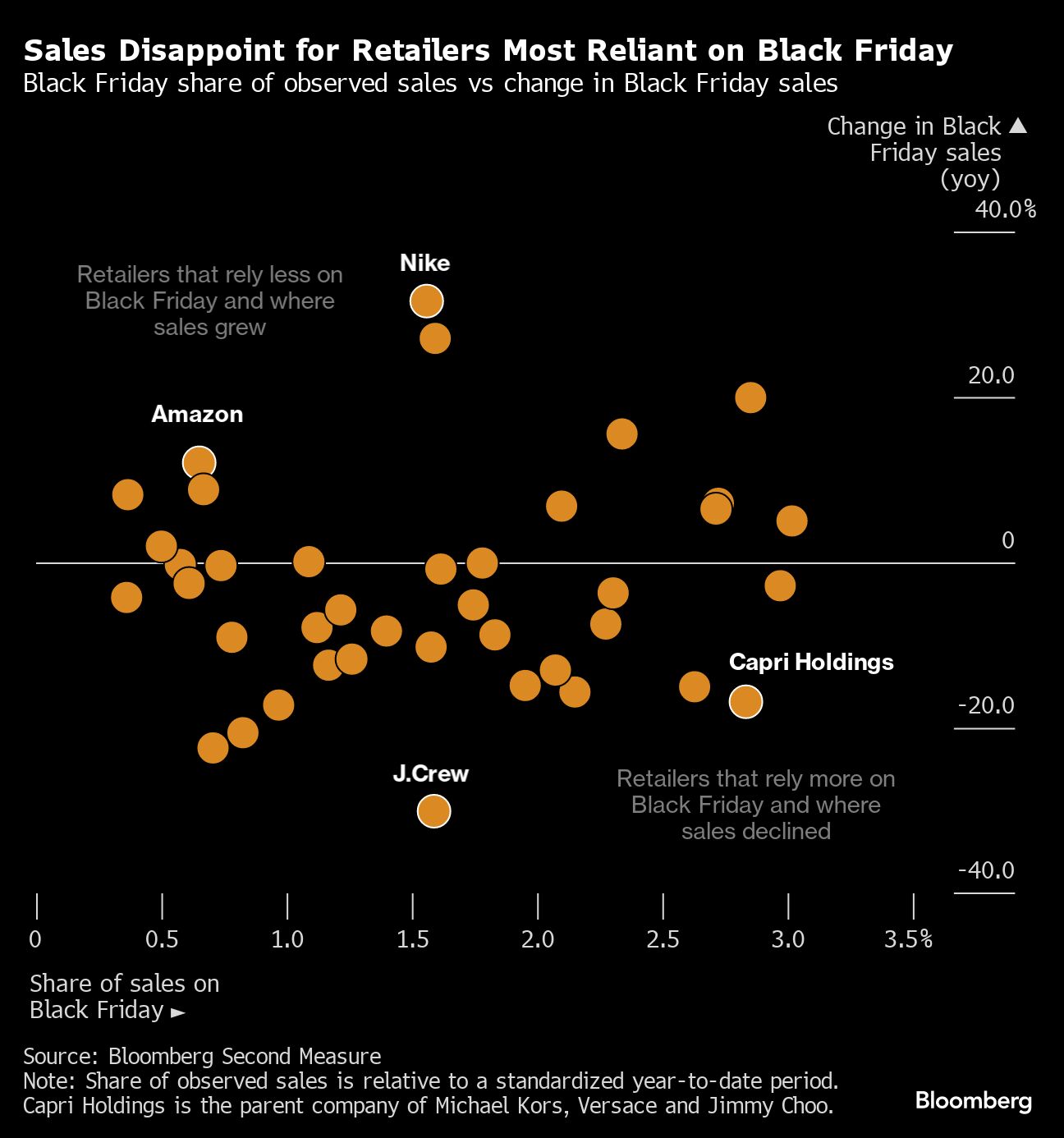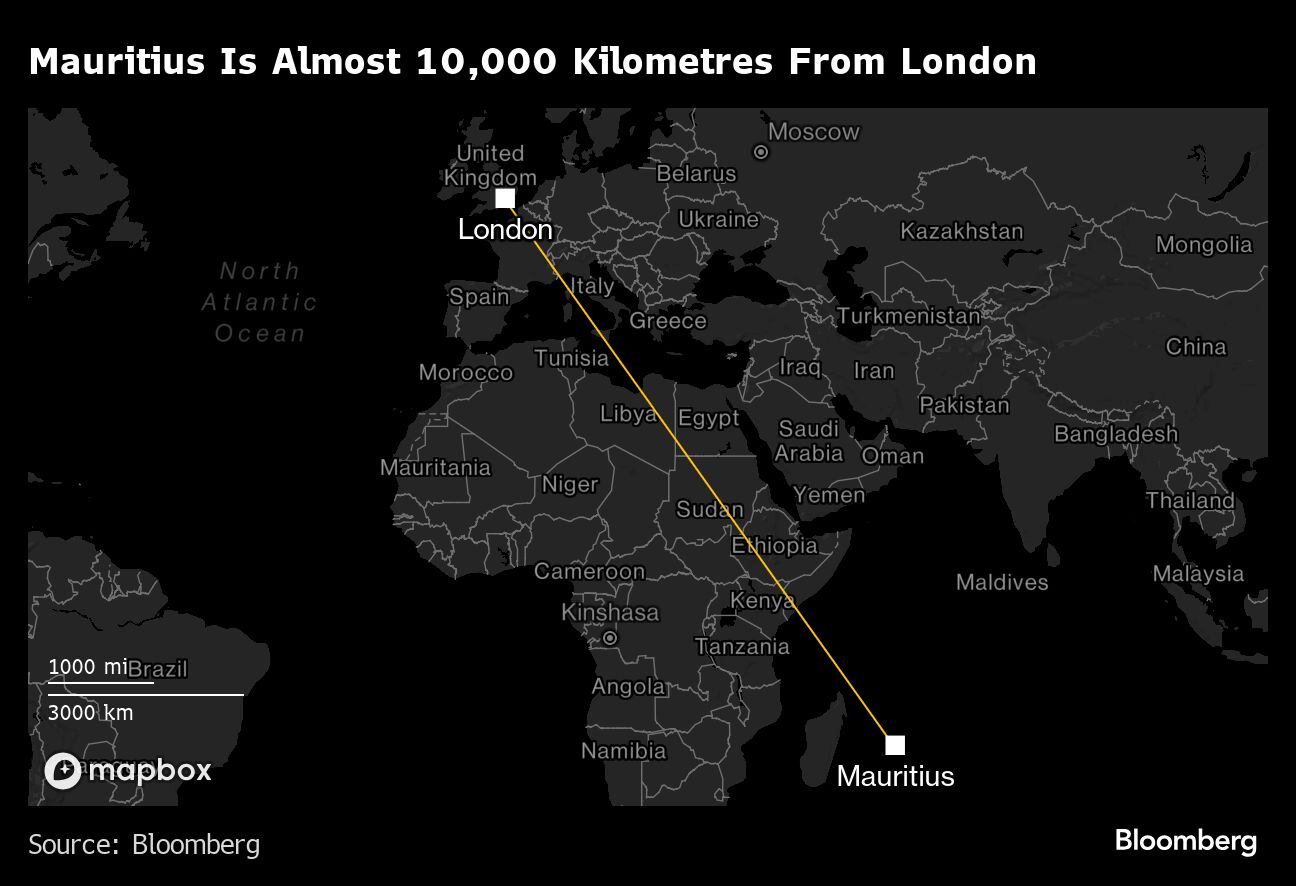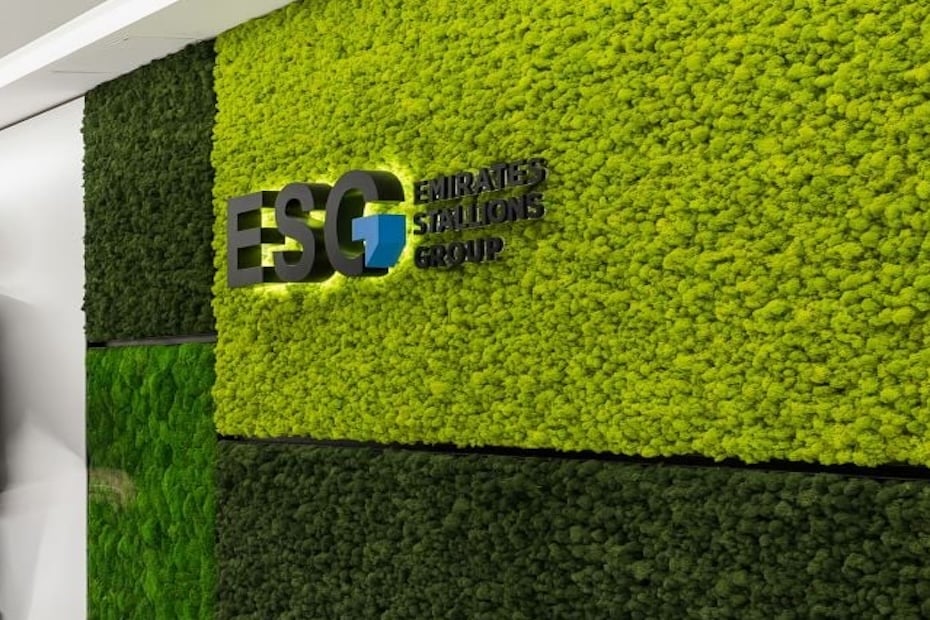
BLACK FRIDAY SALES SIGNAL TOUGH HOLIDAYS FOR US RETAILERS
(Bloomberg) -- For retailers and brands that rely on Black Friday the most, the day was a dud.
That’s a troubling sign for these chains and a US economy that needs consumers to keep upping their spending to avoid a recession. It also increases the risk that the remainder of the holiday shopping season will be disappointing, forcing retailers to offer more discounts to catch up.
The median decline in Black Friday sales was 4% for a group of 40 companies that generate a higher percentage of year-to-date sales from the shopping holiday than their peers, according to an analysis of Bloomberg Second Measure transaction data. That was a steeper drop than 2022.
Bloomberg looked at retailers where Black Friday made up a disproportionate share of observed sales, spanning big-box stores such as Walmart Inc. and home improvement giant Home Depot Inc. to clothing chains Abercrombie & Fitch Co. and Gap Inc.(1)Data from Bloomberg Second Measure is based on a sample of millions of US credit and debit card users and doesn’t track wholesale channels, which are significant for companies like cosmetics maker Estée Lauder Cos., and some other forms of payment, including cash(2).
Black Friday represented more than five times an average day’s worth of observed US direct-to-consumer sales to date, according to the median estimate for the group. That’s the highest level since 2019, meaning these retailers are relying more on this one shopping day even as the number of bargain hunters they’re attracting dwindled.
To be sure, Adobe Analytics said that Black Friday spending online was up by 7.5% compared to last year. This might indicate that consumers are shifting some of their spending from the traditional Black Friday retailers that Bloomberg analyzed to discount retailers or more experiences and travel purchases.
That may also explain one of the few bright spots in the Bloomberg Second Measure data, which showed rising sales for discounters such as Walmart and TJX Cos Inc, the parent company of T.J. Maxx and Marshalls. Even Amazon.com Inc., which tends to generate more spending in the immediate run-up to the Christmas holiday, boosted its Black Friday haul by 12%.(3)
But for most other retailers Bloomberg analyzed, Black Friday spending fell, in some cases by double digits.
(1)
(2) Data from Bloomberg Second Measure is based on a sample of millions of US credit and debit card users and doesn’t track wholesale channels, which are significant for companies like cosmetics maker Estee Lauder, cash/check/EBT transactions, ACH, international transactions, business spending, gift cards, corporate-branded cards, transactions done through certain buy now, pay later platforms or refunds. Data for brands, such as Nike and Apple, is from their retail divisions (stores and e-commerce). Sales at wholesale partners, such as department stores, are not included in the brand's data.
(3) Bloomberg Second Measure tracks spending on Amazon services or brands, including Whole Foods Market.
Most Read from Bloomberg
- Charlie Munger, Who Helped Buffett Build Berkshire, Dies at 99
- Saudi Arabia Offers Iran Investment to Limit Israel-Hamas War
- Bill Ackman Bets Fed Will Cut Interest Rates as Soon as First Quarter
- Musk’s Cybertruck Is Already a Production Nightmare for Tesla
- Okta Says Hackers Stole Data for All Customer Support Users
©2023 Bloomberg L.P.
2023-11-29T11:18:59Z dg43tfdfdgfd











